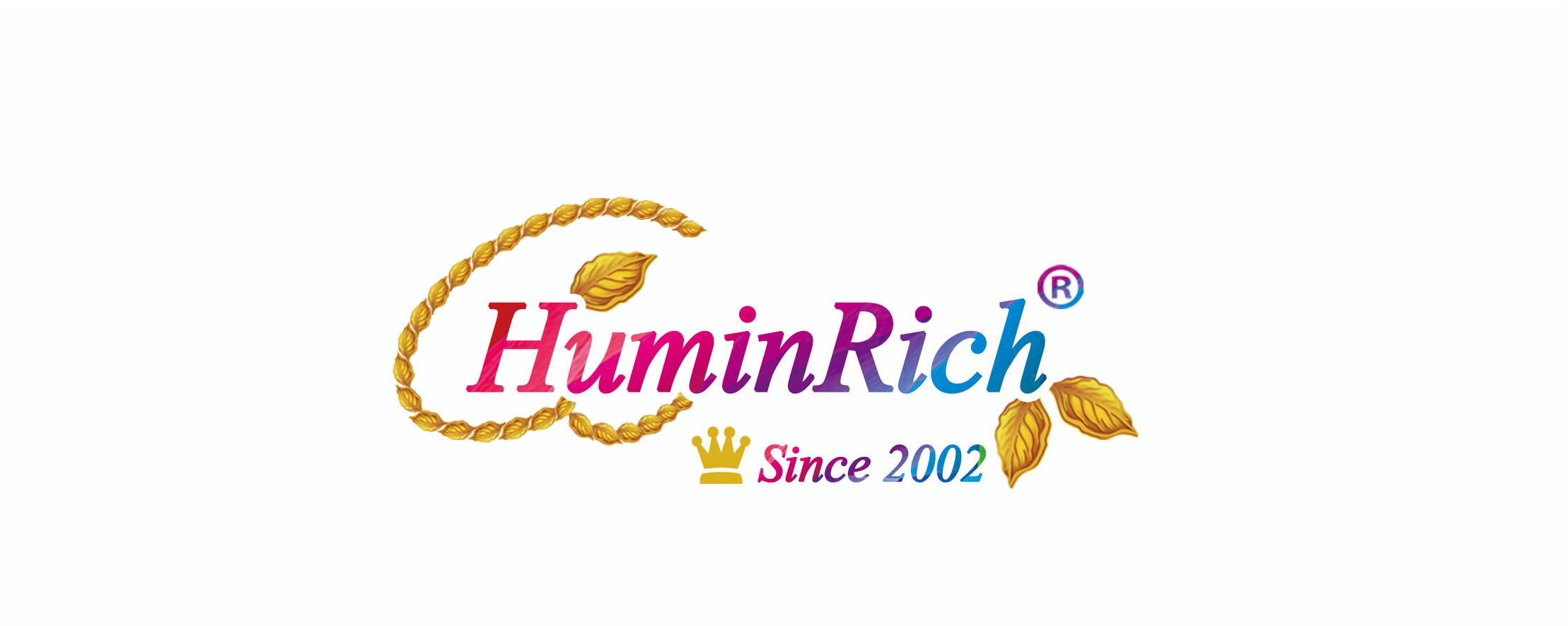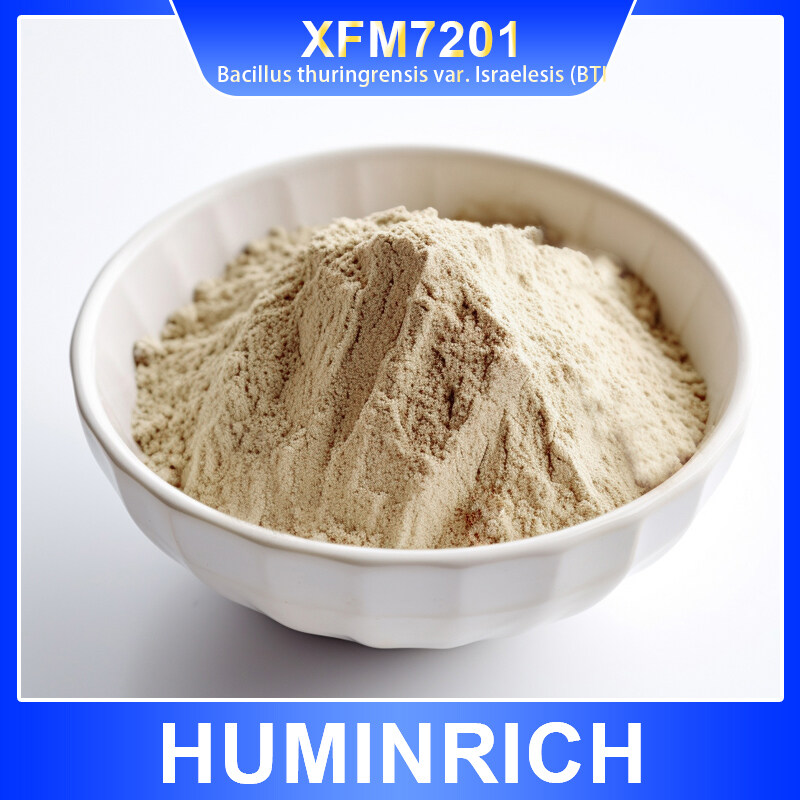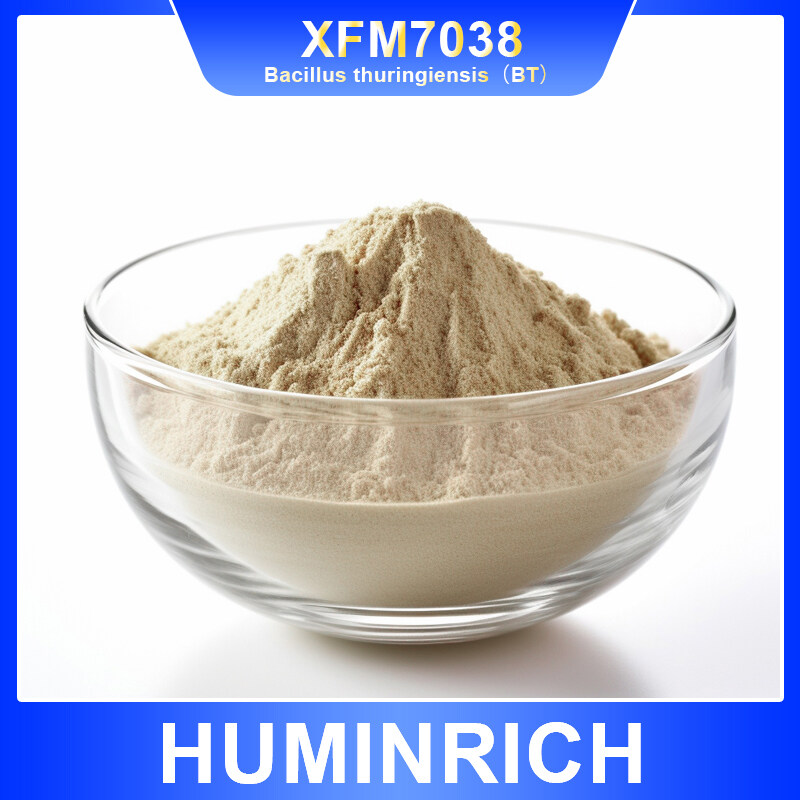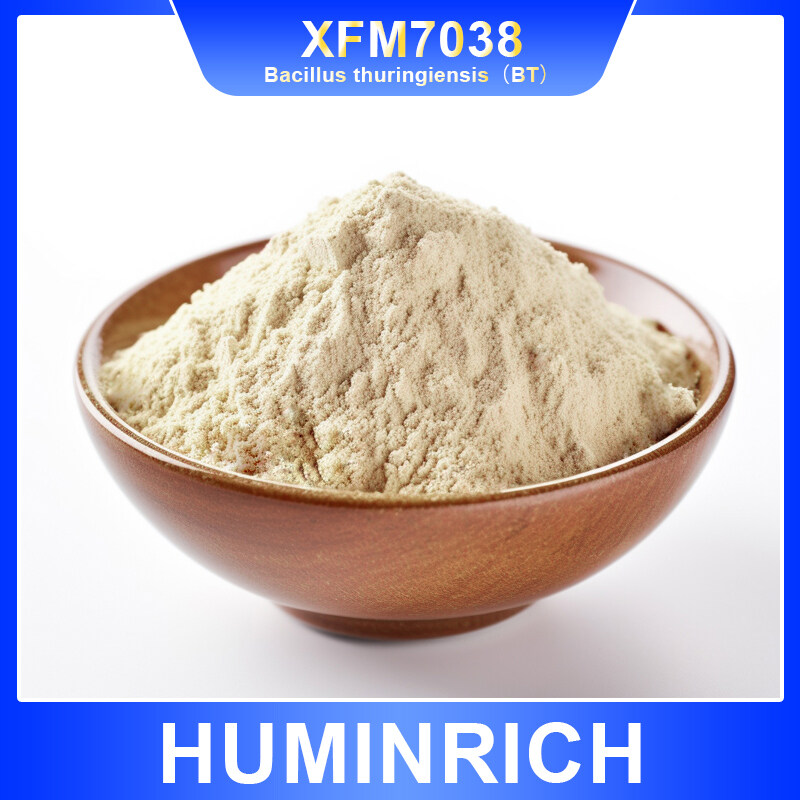Email format error
Email cannot be empty
Email already exists
6-20 characters(letters plus numbers only)
The password is inconsistent
Email format error
Email cannot be empty
Email does not exist
6-20 characters(letters plus numbers only)
The password is inconsistent

Bacillus thuringiensis(BT)WP 16000IU-pesticides
Bacillus thuringiensis insecticide is a microbial preparation produced by fermentation and culture using the insecticidal bacterium Bacillus thuringiensis. Bacillus thuringiensis is one of the most extensively studied and widely used insecticidal microorganisms. Bt has a special insecticidal mechanism, is safe and environmentally friendly, and is not easy to develop resistance. This product uses special dyes and is produced in an advanced manner. The pests stop feeding after 30 minutes, and the death peak occurs after 24 hours. It has the advantages of quick death, long residual effect, and safe operation.
Catalog of Microbial Bacteria
|
Classification |
Type |
Mode |
Chemical Name |
Content |
CAS No. |
|
WP wettable powder |
Fungicide |
XFM7031-1 |
Bacillus subtilis |
1.0X10^10CFU/g |
12211-28-8 |
|
WP wettable powder |
Fungicide |
XFM7031-3 |
Bacillus subtilis |
1.0X10^11CFU/g |
12211-28-8 |
|
WP wettable powder |
Fungicide |
XFM7031-4 |
Bacillus subtilis |
2.0X10^10CFU/g |
12211-28-8 |
|
TC |
pesticides |
XFM7038-2 |
Bacillus thuringiensi(BT) |
50000IU |
23526-02-5 |
|
WP wettable powder |
pesticides |
XFM7038-3 |
Bacillus thuringiensi(BT) |
50000IU |
23526-02-5 |
|
WP wettable powder |
pesticides |
XFM7038-4 |
Bacillus thuringiensi(BT) |
32000IU |
23526-02-5 |
|
WP wettable powder |
pesticides |
XFM7038-5 |
Bacillus thuringiensi(BT) |
16000IU |
23526-02-5 |
|
WP wettable powder |
pesticides |
XFM7201-1
|
Bacillus thuringrensis var. Israelesis (BTI) |
1200ITU |
23526-02-5 |
|
TC |
pesticides |
XFM7201-2 |
Bacillus thuringrensis var. Israelesis (BTI) |
7000ITU |
23526-02-5 |
|
Classification |
Type |
Mode |
Chemical Name |
Content |
|
|
WP wettable powder |
feed grade |
XFMF7031-3 |
Bacillus subtilis |
1.0X10^11CFU/g |
12211-28-8 |
|
Insoluble powder |
feed grade |
XFMF7032-2 |
Bacillus licheniformis |
1.0X10^11CFU/g |
68038-66-4 |
|
WP wettable powder |
feed grade |
XFMF7032-3 |
Bacillus licheniformis |
1.0X10^11CFU/g |
68038-66-4 |
|
WP wettable powder |
feed grade |
XFMF7030-2 |
Bacillus Coagulans |
1.0X10^10CFU/g |
68038-65-3 |
|
WP wettable powder |
feed grade |
XFMF7030-3 |
Bacillus Coagulans |
1.0X10^11CFU/g |
68038-65-3 |
1.Product specifications:
|
Name |
Bacillus thuringiensis(BT) |
|
Model No. |
XFM7038-5 |
|
Type |
WP |
|
Appearance |
light yellow powder |
|
Bacillus thuringiensis |
16000IU |
|
As |
<5ppm |
|
Pb |
<5ppm |
|
Hg |
<5ppm |
|
Cd |
<5ppm |
|
Moisture |
10% Max |
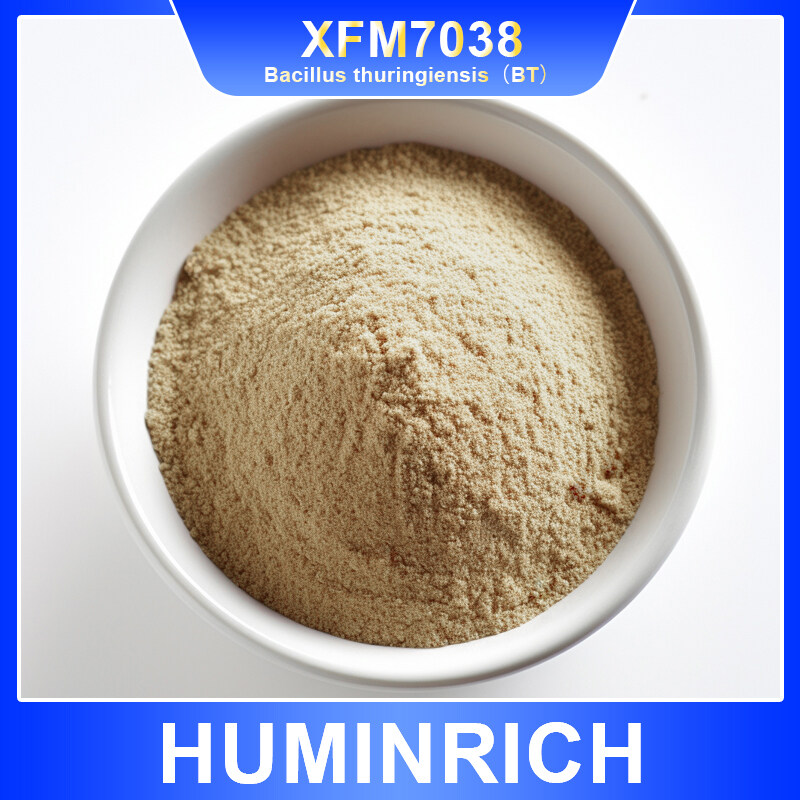
2. Product Functions:
Bacillus thuringiensis insecticide is a microbial preparation produced by fermentation and culture using the insecticidal bacterium Bacillus thuringiensis. Bacillus thuringiensis is one of the most extensively studied and widely used insecticidal microorganisms. Bt has a special insecticidal mechanism, is safe and environmentally friendly, and is not easy to develop resistance. This product uses special dyes and is produced in an advanced manner. The pests stop feeding after 30 minutes, and the death peak occurs after 24 hours. It has the advantages of quick death, long residual effect, and safe operation.
3. Product advantages:
3.1 Precision pest control: Target specific pests to protect beneficial insects and the ecological environment.
3.2 Reduce crop losses: Effectively control a variety of harmful pests and reduce crop losses.
3.3 Environmental safety: does not cause harm to the environment, wildlife or human health, and complies with green agricultural practices.
3.4 Sustainable pest management: Provide more environmentally friendly and effective pest control methods to promote sustainable agricultural development.
4. Mechanism of action
When the pest eats the parasporal crystals and spores, the parasporal crystals dissolve in the alkaline environment of the insect's intestines, releasing toxins that have a strong poisoning effect on lepidopteran larvae. This toxin paralyzes the midgut of the larvae, causing poisoning symptoms such as loss of appetite, failure to respond to contact stimuli, anorexia, vomiting, diarrhea, slow movement, and body shrinkage or curling. Generally, it no longer causes harm to crops. After a period of disease progression, the intestinal wall of the pest is damaged and toxins enter the blood, causing sepsis. At the same time, the spores multiply rapidly in the digestive tract, accelerating the death of the pest. The bodies of dead larvae are limp and black. Therefore, pests can only die after eating Bt bacteria into their stomachs, and then go through a disease process. It takes about 48 hours to achieve the purpose of killing pests. It is not as fast as chemical pesticides, but after being infected, pests will vomit. Diarrhea, unable to move without eating, no longer harming crops.
5.Bt pesticides have many advantages compared with chemical pesticides:
First, it is non-toxic to humans and animals and safe to use. The protein toxins of Bt bacteria have no effect in the gastrointestinal tract of humans, livestock and poultry.
Second, it is highly selective and does not harm natural enemies. Bt bacteria only specifically infect certain types of insects and play a protective role against natural enemies.
Third, it does not pollute the environment and does not affect the activities of soil microorganisms. It is a clean pesticide.
Fourth, continuous use will form pest epidemic areas, causing the widespread spread of pest pathogens, achieving the purpose of naturally controlling insect population density.
Fifth, there is no residual poison, and the products produced are safe to eat. At the same time, the color and flavor of vegetables and fruits are not changed.
Sixth, it is not easy to develop drug resistance, which is only a relative term. Humanity's battle against harmful insects is extremely difficult and complicated. Reports of resistance to pesticides have recently been discovered, but they are not as fast as chemical pesticides.
6.Product application fields and functions:
Bacillus thuringiensis is widely applicable to cruciferous vegetables, solanaceous vegetables, melon vegetables, tobacco, rice, corn, sorghum, soybeans, peanuts, sweet potatoes, cotton, tea trees, apples, pears, peaches, dates, Citrus, banana, mango, lychee and other crops as well as forests and grasslands. Bacillus thuringiensis has a wide insecticidal spectrum and is mainly used to control lepidopteran pest larvae, such as cabbage caterpillar, diamondback moth, beet armyworm, Spodoptera litura, cabbage armyworm, tobacco caterpillar, corn borer, rice leaf roller, and The larvae of various pests such as borers, pine caterpillars, tea caterpillars, tea loopers, corn armyworms, pod borers, and Spodoptera exigua. Some subspecies or strains are also effective against root-knot nematodes, mosquito larvae, leek maggots, beetles and other pests. Prevention and treatment effect.
7. Packaging, transaction method, delivery method, etc.:
Packaging: 1kg/25kg bag/drum with linner inside.
Payment method: Western Union; T/T; MoneyGram
Shipping method: Sea/Air/Domestic Shipping}
8. After-sales service/customized service/sample service:
Packaging customization: Customized services are provided for packages above 1000KG;
Sample service: samples are available;
